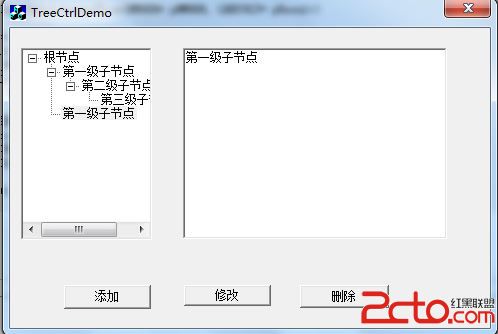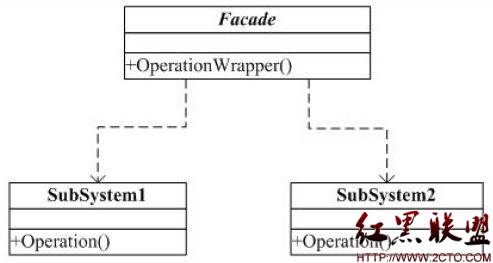模版——容器,迭代器
题:
试用多态实现线性表(队列、串、堆栈),要求具备线性表的基本操作:插入、删除、测长等。【美国著名软件企业GS公司2007年11月面试题】
解析:
队列、串、堆栈都可以实现push、pop、测长等操作。现在要求用多态去实现,就要建立一个线性表的共性模版,来实现以上的功能。
答案:程序源代码与解释如下
// P101_example2.cpp : Defines the entry point for the console application.
//
#include "stdafx.h"
#include <iostream>
template <typename T>
struct tcontainer
{
virtual void push(const T&) = 0; //插入
virtual void pop() = 0; //删除
virtual const T& begin() = 0; //
virtual const T& end() = 0; //
virtual size_t size() = 0; //返回长度
};
template <typename T>
struct tvector : public tcontainer<T>
{
static const size_t _step = 100; //一次增加容量的大小
private:
size_t _size; //实际元素的个数
size_t _cap; //已分配的容量
T* buf; //首地址
public:
tvector()
{
_size = 0; //初始化容器实际大小
_cap = _step; //初始化容器容量的大小为_step
buf = 0; //首地址需要动态分配内存
re_capacity(_cap); //此时buf为空,即要设置buf初始值,配了100个元素的空间
}
~tvector()
{
free(buf); //释放内存
}
void re_capacity(size_t s) //调整容量
{
if(!buf) //buf初始为空
{
buf = (T*)malloc(sizeof(T)*s);
}
else
buf = (T*)realloc(buf,sizeof(T)*s); //在buf基础上调整容量
}
virtual void push(const T& v)
{
if(_size >= _cap) //超过容量
re_capacity(_cap += _step);
buf[_size++] = v;
}
virtual void pop() //删除最后一个元素
{
if(_size)
_size--;
}
virtual const T& begin() //返回第一个元素
{
return buf[0];
}
virtual const T& end() //返回最后一个元素
{
if(_size)
return buf[_size-1];
}
virtual size_t size() //返回容量的大小
{
return _size;
}
const T& operator[](size_t i) //取第i个元素
{
if(i >= 0 && i < _size)
return buf[i];
}
};
int _tmain(int argc, _TCHAR* argv[])
{
tvector<int> v;
for(int i = 0; i < 1000; ++i)
{
v.push(i);
}
for(int i = 0; i < 1000; ++i)
{
std::cout<<v[i]<<std::endl;
}
return 0;
}
// P101_example2.cpp : Defines the entry point for the console application.
//
#include "stdafx.h"
#include <iostream>
template <typename T>
struct tcontainer
{
virtual void push(const T&) = 0; //插入
virtual void pop() = 0; //删除
virtual const T& begin() = 0; //
virtual const T& end() = 0; //
virtual size_t size() = 0; //返回长度
};
template <typename T>
struct tvector : public tcontainer<T>
{
static const size_t _step = 100; //一次增加容量的大小
private:
size_t _size; //实际元素的个数
size_t _cap; //已分配的容量
T* buf; //首地址
public:
tvector()
{
_size = 0; //初始化容器实际大小
_cap = _step; //初始化容器容量的大小为_step
buf = 0; //首地址需要动态分配内存
re_capacity(_cap); //此时buf为空,即要设置buf初始值,配了100个元素的空间
}
~tvector()
{
free(buf); //释放内存
}
void re_capacity(size_t s) //调整容量
{
if(!buf) //buf初始为空
{
buf = (T*)malloc(sizeof(T)*s);
}
else
buf = (T*)realloc(buf,sizeof(T)*s); //在buf基础上调整容量
}
virtual void push(const T& v)
{
if(_size >= _cap) //超过容量
re_capacity(_cap += _step);
buf[_size++] = v;
}
virtual void pop() //删除最后一个元素
{
if(_size)
_size--;
}
virtual const T& begin() //返回第一个元素
{
return buf[0];
}
virtual const T& end() //返回最后一个元素
{
if(_size)
return buf[_size-1];
}
virtual size_t size() //返回容量的大小
{
return _size;
}
const T& operator[](size_t i) //取第i个元素
{
if(i >= 0 && i < _size)
return buf[i];
}
};
int _tmain(int argc, _TCHAR* argv[])
{
tvector<int> v;
for(int i = 0; i < 1000; ++i)
{
v.push(i);
}
for(int i = 0; i < 1000; ++i)
{
std::cout<<v[i]<<std::endl;
}
return 0;
}
补充:软件开发 , C++ ,




